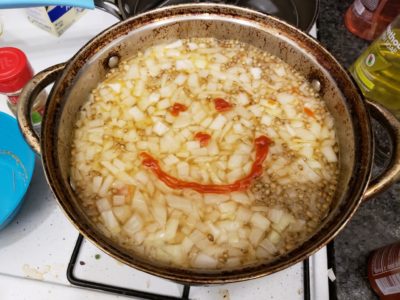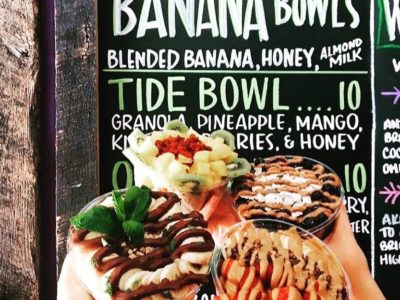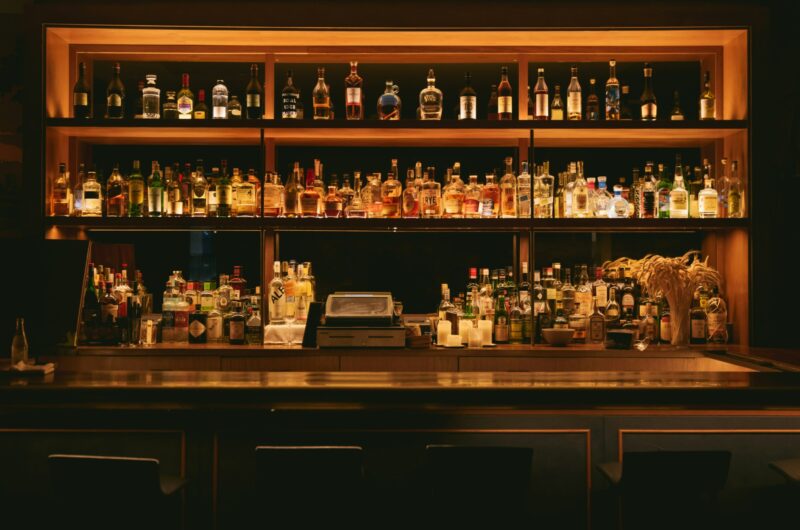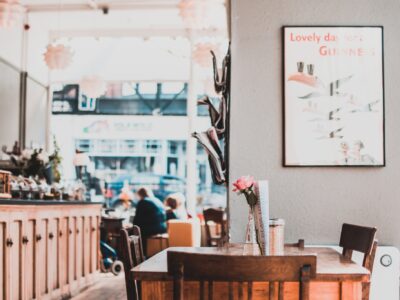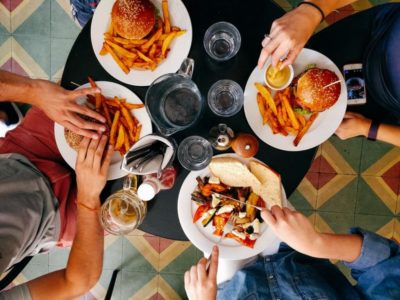My alarm went off at 3:30 a.m. on a Thursday morning in early April. After 30 minutes of negotiations, I finally convinced myself to leave the warmth of my NYU-mandated Twin XL bed to start cooking.
Today’s special: Viet-Cajun Pho.
I don’t want you to think that this is some kind of routine or that this is something I normally cook. I am not a chef. Normally, my “répertoire culinaire” consists of grilled cheeses, spaghetti with undercooked meatballs, PB&Js and anything else you’d associate with typical dorm life. Yet on this early, early Thursday morning, I was sacrificing much–needed sleep to cook for my Food & Identities course, a requirement for a minor in Food Studies. The class was assigned to bring a food item to class that had special significance to us and, as the syllabus says, communicate that “food’s special meaning in a way that others can grasp.”
I seized the chance to cook the dish that introduced me to the storytelling capabilities of food, even if the process was going to take four hours.
The history of Vietnamese-Cajun food dates back to a wave of Vietnamese refugees migrating into America, many of them settling in Houston, Texas as a result of the Vietnam War. As they migrated, they brought their culture (and food) to America. They started borrowing the flavors that come with the region, namely Cajun, giving way to Viet-Cajun food.
I learned about this piece of Houston’s history in the summer of 2018 when I was a residential counselor for a summer camp at Rice University. Though I knew Houston had great food, I took this burgeoning city for granted. Every Thanksgiving, my family and I made the journey from my hometown in Atlanta, Georgia to Houston to visit my aunts and grandparents. Every year, we’d eat at the same handful of restaurants that my aunts loved. But even the few places we went to had amazing food.
Little Sheep Mongolian Hot pot was a favorite tradition of mine. We’d eat there the night before Thanksgiving. A hot pot fit for at least 12 people—and there was always at least 12 people—the “Mala” corn pepper-based stew burned itself into my brain. I still think about it. Constantly. Then there was the Kolache Factory. They had these great breakfast pastries filled with whatever your heart desired: scrambled eggs, BBQ pulled pork, ranchero, you name it. Miraculously, the owners of the business found a way to make their kolaches taste just as good microwaved as they did fresh.
Yet, after hearing about Viet-Cajun food, I had to venture outside of that comfort zone.
For that, I went to LA Crawfish, a Texas-based franchise. Located in a small strip mall, the restaurant is easy to miss unless you know what you’re looking for. Surrounded by the “sailor” aesthetic in fishing nets and other commercial-fishing memorabilia, it was there, one afternoon in June of 2018, that I had my first bowl of Viet–Cajun Pho. It was a revelation.
The pho doesn’t look terribly different from any other bowl of pho. The broth is tinged red and a crawfish hangs from the side of the bowl flanked by a slice of lime and jalapeno on either side. Normally, a small pile of cilantro sits at the top of the bowl. I ordered my pho without cilantro. I hate cilantro.
The smell, however, suggests another story entirely. The aroma of Cajun seasoning announces the food’s arrival before any dishes hit the table. At this point, you should accept that your clothes will smell like pho for the rest of the day—not that it’s a bad thing. The flavors and smells of each spoonful express the distinctive tastes of Vietnamese pho with a Cajun kick at the end from the mixture of ingredients.
It stands as a physical reminder of the history of Vietnamese immigration into America.
Thinking about the stories of the Vietnamese refugees who came to the US and carved their own identity into American culture reminded me of my parents and their own American dream, my dad from Korea and my mom from Taiwan. Yes, it’s just a bowl of noodles. But it symbolizes so much more. In that strip mall, in that restaurant, in that bowl of noodles, that’s what I learned. A few weeks after that meal, I changed the title in by business card from “Journalist” to “Food Writer.”
Ten months later, on that Thursday morning, I started preparing the ingredients I had bought from an H-Mart in Korea Town the night before. Unfortunately, the recipe I found on the internet was vague about the step-by-step process of cooking the dish, so I did a lot of guessing and made a few ingredient substitutions. That night I learned how to dice onions the fast way and how to deshell shrimp without taking the heads off. Not to mention that I also found out that Ratatouille is the perfect in-kitchen entertainment for a long night of cooking.
The entire process—from the first clove of minced garlic to the last taste test—took a grand total of four hours.
I started cooking at 4 a.m. and finished at 8 a.m., an hour before my class started. As I walked back to my room, I noticed, to my surprise and dread, that the sun had risen and I wondered if this was how professional chefs felt every day. I set another alarm for 8:30 a.m. and slumped in my bed for 30 minutes. I was going to get every minute of sleep I could get my eyes on.
Much of my sophomore year was defined by late nights in that kitchen. The dorm that I was staying in, Gramercy Green Residential Hall, was blessed with a nice—albeit windowless—kitchen complete with a dishwasher, which I’m told is rare in New York. We filled the kitchen with pots, pans and kitchen appliances of all kinds. For a while, room 914 felt like home.
In that moment, I was strangely aware that in years to come, I’d look back on this night and many like it, with nostalgia. While the cultural significance of Viet-Cajun pho is still very prevalent in my mind, it has taken a new personal meaning for me. Cooking something with nothing but a half-written recipe, a bootleg version of Ratatouille with Russian subtitles on the bottom and the faint memory of a flavor, I looked to savor the moment.

